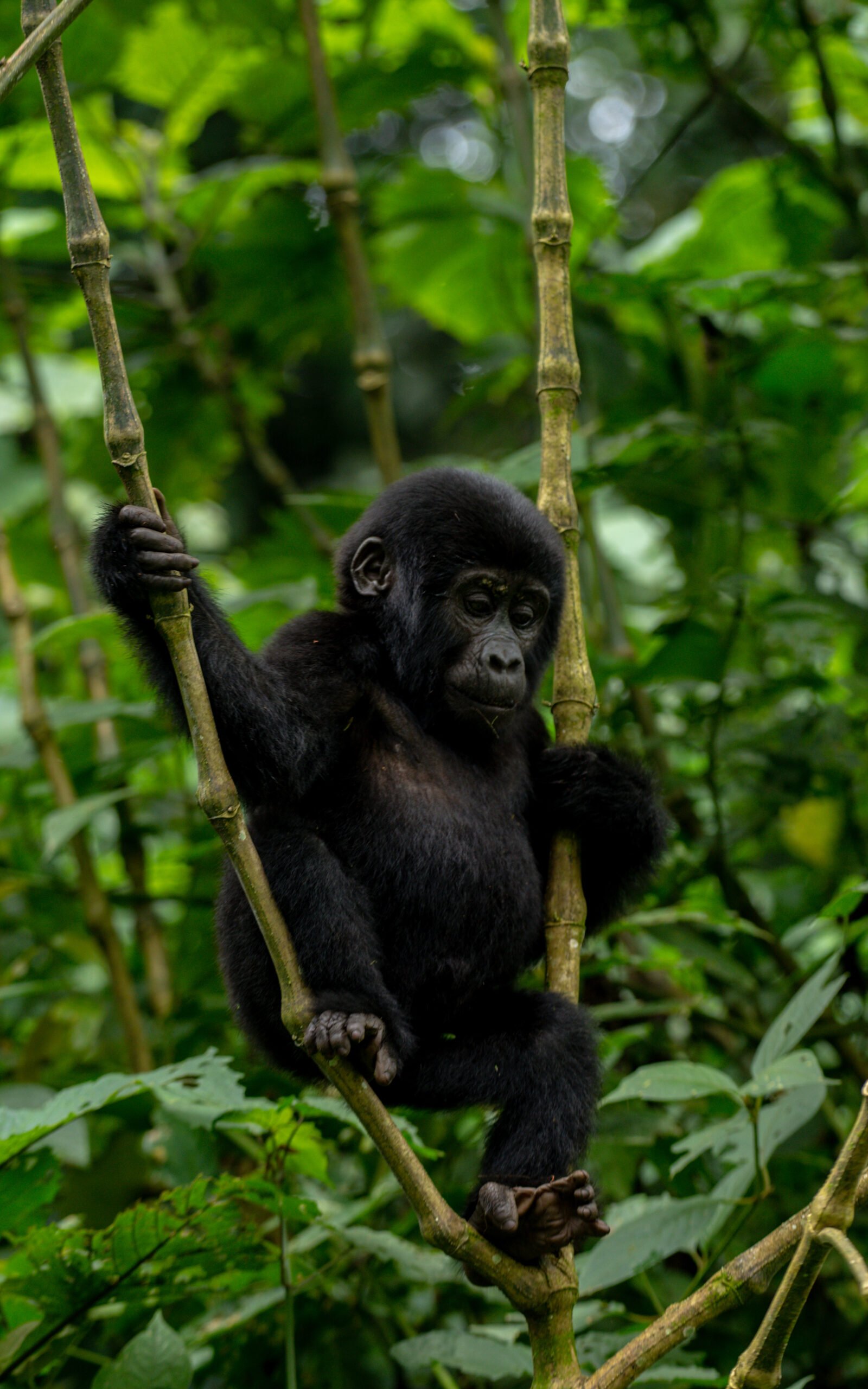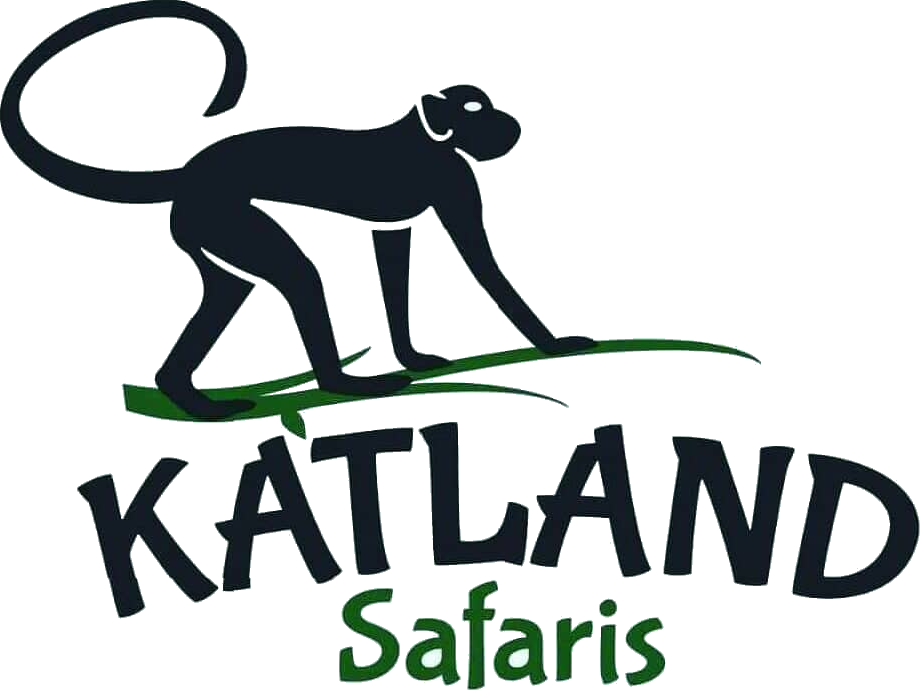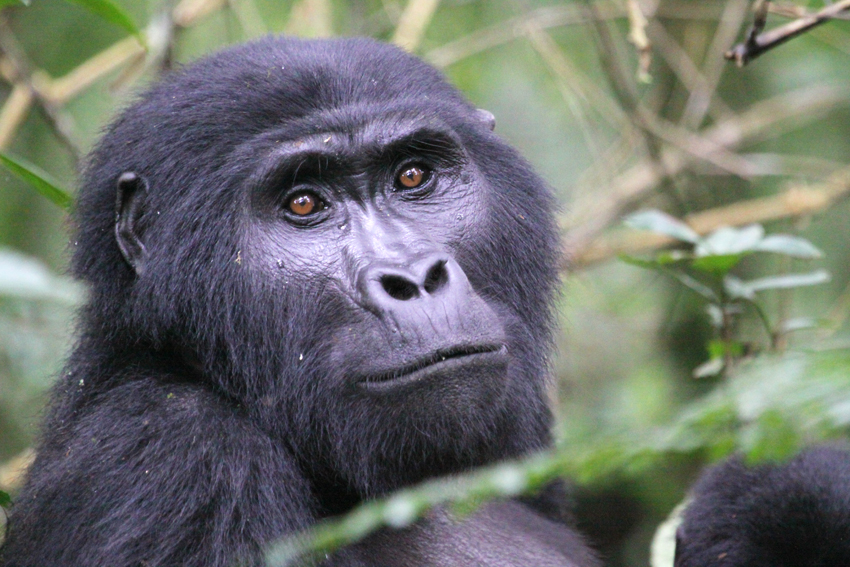Which country in Africa has more mountain gorillas? – Countries with mountain gorillas in Africa
Countries in Africa with mountain gorillas. Based on the most recent census, the present count of mountain gorillas in Africa exceeds 1000. Though Uganda has approximately half of the population, the mountain gorillas dwell in D.R. Congo, Rwanda, and Uganda.
Mgahinga National Park and Bwindi Impenetrable National Park house the mountain gorillas living in Uganda. There are just 19 fully inhabited gorilla families available for tourists right now. Two gorilla families in the southern sector, so far exposed to habituation experience, also reside in Bwindi forest.
Living at Volcanoes National Park, Rwanda, mountain gorillas number fifteen families available for visitors. Six gorilla families have been totally habituated and are open for visitors; the D.R. Congo mountain gorillas live in Virunga National Park.
According to a census, the number of mountain gorillas was at the brink of extinction by the 1980s; this is the history of gorilla trekking in Africa. After doing this mountain gorilla count, American primatologist Dian Fossey and her colleagues reached this conclusion.
After the mountain gorillas were included in the global list of critically threatened primates, conservation took the stage. But the then-unceasing political upheaval in the Virunga region—including the 1994 Rwanda Genocide—disturbed this conservation effort.
Beginning the gorilla habituation procedure in the early 1990s, the Uganda gorilla tracking adventure continued until 1993, when the Mubare gorilla family was first opened for visitors. Later on, the other three gorilla families— Rushegura, Habinyanja, and Nkuringo—were totally settled and open for visitors. Currently, there are nineteen gorilla families available for tourism out of Uganda that are suitable for trekking.
Number of Gorilla Families Found in Uganda | Countries with mountain gorillas in Africa
The Buhoma area in the north, the Ruhijah area in the east, the Rushaga area, and the Nkuringo area in the southern side of Bwindi Impenetrable National Park comprise the distribution of these mountain gorillas.
Among the mountain gorilla families living in Uganda are the Rushegura family, the Mubare family, the Oruzogo family, the Bitukura family, the Nshongi family, the Bweza family, the Chrismas family, and others. Only one gorilla family, known as Nyakagezi, calls the Mgahinga National Park home.
Based on a recent mountain gorilla population count, Uganda is thought to be home to around 459 mountain gorillas, from over 400 per the 2011 census. As infants come forward and deaths are documented as well, this count is continuously growing.
Some mountain gorilla families have been released for public gorilla trekking after being well settled. In Uganda, nineteen gorilla families have already opened for visitors.
Two gorilla families available for gorilla habituation safaris also reside in Uganda. Visitors of Gorilla Habituation Safari can accompany a family of semi-habituated mountain gorillas. They coexist with veterinarians, trackers, and researchers.
Number of Gorilla Families Within Virunga National Park | Countries with mountain gorillas in Africa
Additionally included in the Virunga region are Volcanoes National Park in D.R. Congo and Rwanda.
About 605 mountain gorillas were recorded to inhabit the Virunga region during the most recent count of them. New births and mountain gorilla reported deaths are driving the population increase.
There are around fifteen gorilla families available for visitors in Rwanda; you may reserve a permit for any one of them.
Among the Rwanda gorilla families are the Muhoza, Agasha, Amahoro, Susa, Sabyinyo, and several more.

How Can I Schedule Gorilla Permits For D.R. Congo, Rwanda, Uganda?
Choose a day when you want to go gorilla trekking, together with the safari companion you intend to share.
Either pick a competent tour operator like Katland Safaris or ask the Uganda Wildlife Authority/Ruckus Development Board. We take off your shoulders the responsibility of verifying availability and assembling additional gorilla Trekking safari package components.
Based on your preferred date, our safari adviser looks to see if gorilla permits are available in Uganda or Rwanda.
Should the gorilla’s permit availability be favorable, we urge customers to get theirs right away to ensure they receive all the perks. Although their supply is just 8 per gorilla family daily, mountain gorillas are becoming increasingly rare as time passes due to great demand worldwide.
Later on, mention certain personal information such as nationality, date of birth, names as shown on the passport, expiry date of the passport, and others. This information is used for record purposes; part of it is recorded on the certificate following the gorilla trekking.
In Africa, how much might I purchase a Gorilla Trekking Permit?
In Uganda, the gorilla licenses cost $800 per person each trip; in Rwanda, they cost $1500 per person; in D.R. Congo, they cost $450 every trek.
Included in the Gorilla permit fee is
Park fees, ranger guide fees, funds for gorilla conservation, local community support, and one hour with the mountain gorillas.
forbids
Transportation; tips; beverages; packed lunch; any other personal item.
Where in Africa’s Uganda should one go for gorilla trekking?
Mountain gorillas from Uganda call Bwindi Impenetrable National Park their habitat. Mountain gorillas found in this wooded National park make up around half of the known population worldwide. The park is found in southwest Uganda.
Bwindi Forest is split up into the Ruhija area, the Rushaga area, the Nkuringo area, and the Buhoma area.
You have to know where the permit is booked before deciding on lodging for the gorilla trekking period in Bwindi Impenetrable National Park. This is so because it is impossible to keep up with the early morning briefing by moving from one place to another.
Rich in primate habitat, this park boasts olive baboons, chimpanzees, blue monkeys, grey-cheeked mangabey, L’Hoest, red-tailed monkeys, and other species.
Gorilla hiking plus birding in Bwindi Impenetrable National Park presents twice the possibilities even for avid birders. This park boasts around 350 different bird species. Particularly when you follow the route to the Mubwindi marsh, the Ruhijah region is the best place for birding in the Bwindi forest.
Mgahinga National park
Comprising an area of around 33.7 square kilometers, this is among the smaller habitats of the mountain gorillas. A great landscape is created by the unique volcanic mountains that surround this park. Mountains Muhabura, Sabyinyo, and Gahinga are among these.
This park only features one gorilla family—the Nyakagezi family—that is accessible for visitors. This family of mountain gorillas used to stray into Rwanda in the past, but it has been residing in the Mgahinga National Park regularly.
Thanks to Mgahinga National Park’s untouched environment, you may engage in mountaineering, birding, and scenic gazing in addition to gorilla trekking.
Rwanda
Mountain gorillas in Rwanda find their sole home in Volcanoes National Park. The park is situated northwest of Rwanda. Volcanic highlands dominate its geography; some of the most remarkable mountains are found here. Included in Volcanoes National Park are five of the six Virunga ranges: Karisinbi, Bisoke Mountain, Sabyinyo, Mountain Muhabura, and Mountain Gahinga.
Currently open for gorilla trekking in Rwanda are around 15 gorilla families. Among them are the Agashu family, the Umubano family, the Karisimbi family, the Her family, and several more. The Amahoro family
Albertine rift endemics, among over 300 bird species, call this Rwandan National Park home. Additionally appealing to an ornithologist are birding excursions and gorilla trekking in this park.
Additional primates like golden, blue, red-tailed, olive baboons, black and white colobus, and others call Volcanoes National Park home.
In D.R. Congo
Among the four mountain gorilla habitats worldwide is Virunga National Park. There are perhaps six gorilla families available for visitors in this National Park.
The gorilla habituation process in Virunga National Park has been hampered by the uncertainty in this region. This clarifies its limited number of gorilla families open for visitors.
Among the gorilla families in Virunga National Park are the Mapuwa gorilla family, Lulengo gorilla family, Rugendo gorilla family, Munyaga gorilla family, Kabirizi gorilla family, and Humba gorilla family.
Which nation in Africa would be best for gorilla trekking? – Countries with mountain gorillas in Africa
Whether you go gorilla trekking in Uganda, Rwanda, or D.R. Congo, the experience you have standing before the sole surviving mountain gorillas is unparalleled anywhere. This one hour causes you to momentarily forget the difficulty you might have had tracking the mountain gorillas.
Among the elements influencing the three mountain gorilla habitats during gorilla trekking are;
The gorilla’s permission cost
The Rwanda gorilla permit now costs $1500 per person each trip; the Uganda gorilla permit now costs $800 per person; and the D.R. Congo gorilla permit costs $450 per person.
One spends time reaching the habitats of mountain gorillas.
From Kigali airport in Rwanda, the travel takes three hours over picturesque, meandering roads. About eight to nine hours separate the travel from Entebbe Airport in Uganda to Mgahinga National Park. Unless you transit via Kigali airport in Rwanda, the trip from any D.R. Congo airport to Virunga National Park might take days.
Security at the sites of gorilla treks
Civil turmoil at Virunga National Park in the D.R. Congo causes security issues. This is slowing down the gorilla trekking activities here. Nonetheless, the political environment of Uganda and Rwanda is long outstanding, so the gorilla trekking safari is safe.
Gorilla families open for visitors count.
- R. Congo has six gorilla families; Rwanda has around fifteen; Uganda has nineteen available for tourism. Consequently, given the higher number of gorilla families, Uganda offers the best possibilities of getting a gorilla permit during the peak season.
More Safari Activities to Match Gorilla Trekking
Along with gorilla trekking, Uganda offers a range of additional alternative activities, including chimpanzee trekking, wildlife drives, birdwatching, mountaineering, and others. Rwanda and D.R. Congo have only extra activities related to African safaris.
What Should One Not Do Regarding Gorilla Trekking Safari in Africa?
No, walking into the forest without an escorting ranger guide will expose you to other residents not accustomed to human presence that can endanger you, such as forest elephants.
Since this is nourishment for the mountain gorillas, spitting on flora is against. Usually vegetarian, they may eat soft stems, leaves, tubers, and other foods; bamboo is their favorite.
Making noise while gorilla trekking is against policy as it might frighten the mountain gorillas, revered of new events in their proximity.
It is against littering the forest with trash, as you change the habitat where mountain gorillas get their food. Avoid throwing plastic wrappers in the forest as well.
Once you find the mountain gorillas, keep a distance of around eight meters from them; if they approach you, gently back off. This lowers the possibility of infecting the extremely sensitive to human illnesses gorillas with an infection.
Flash photography is banned as it could disturb the mountain gorillas that might be scared by such events.
One of the methods to guard the mountain gorillas from absorbing human contagious viruses like Covid-19 is by wearing a fresh mask in front of them.
Should you have a communicative infection, offer to remain behind to prevent passing it on to the mountain gorillas. Their DNA is almost 96% of that of people, hence they are quite vulnerable to illnesses such as cough, flu, COVID-19, and others.
Eat or smoke at least three hundred meters away from the mountain gorillas; they are wild creatures looking for food.
Staying with the mountain gorillas is only one hour, thus they are left to go about their daily business, like feeding, grooming, conception, and others.



